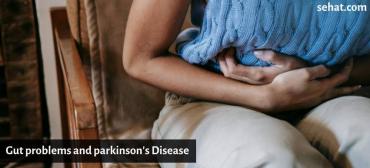Tracheoesophageal Fistula and Esophageal Atresia
What is tracheoesophageal fistula?
Tracheoesophageal fistula is an abnormal connection in one or more places between the esophagus (the tube that leads from the throat to the stomach) and the trachea (the tube that leads from the throat to the windpipe and lungs). Normally, the esophagus and the trachea are two separate tubes that are not connected.
Tracheoesophageal fistula is also known as TE fistula or simply TEF.
TE fistula is a birth defect, which is an abnormality that occurs as a fetus is forming in its mother's uterus.
When a baby with a TE fistula swallows, the liquid can pass through the abnormal connection between the esophagus and the trachea. When this happens, liquid gets into the baby's lungs. This can cause pneumonia and other problems.
What is esophageal atresia?
TE fistula often occurs with another birth defect known as esophageal atresia. The esophagus is a tube that leads from the throat to the stomach. With esophageal atresia, the esophagus does not form properly while the fetus is developing before birth, resulting in two segments; one part that connects to the throat, and the other part that connects to the stomach. However, the two segments do not connect to each other.
Since the esophagus is in two segments, liquid that a baby swallows cannot pass normally through the esophagus and reach the stomach. Milk and other fluids cannot be digested if the esophagus does not connect to the stomach.
If a TE fistula is also present, liquid that a baby swallows can pass through the connection between the esophagus and the trachea and go into the lungs. This can cause pneumonia and other problems.
What causes tracheoesophageal fistula and esophageal atresia?
As a fetus is growing and developing in its mother's uterus before birth, different organ systems are developing and maturing. The trachea and the esophagus begin developing as one single tube. At about four to eight weeks after conception, a wall forms between the fetus' esophagus and trachea to separate them into two distinct tubes. If this wall does not form properly, TE fistula and/or esophageal atresia can occur.
Which babies develop tracheoesophageal fistula or esophageal atresia?
These two problems are not thought to be inherited. However, they are often seen when a baby has other birth defects, such as:
-
Trisomy 13, 18, or 21
-
Other digestive tract problems (such as diaphragmatic hernia, duodenal atresia, or imperforate anus)
-
Heart problems (such as ventricular septal defect, tetralogy of Fallot, or patent ductus arteriosus)
-
Kidney and urinary tract problems (such as horseshoe or polycystic kidney, absent kidney, or hypospadias)
-
Muscular or skeletal problems
-
VATERL syndrome (which involves Vertebral, Anal, Cardiac, TE fistula, Renal, and Limb abnormalities)
Up to one-half of all babies with TE fistula or esophageal atresia have another birth defect.
What are the symptoms of TE fistula or esophageal atresia?
The symptoms of TE fistula or esophageal atresia are usually noted very soon after birth. The following are the most common symptoms of TE fistula or esophageal atresia. However, each child may experience symptoms differently. Symptoms may include the following:
-
Frothy, white bubbles in the mouth
-
Coughing or choking when feeding
-
Vomiting
-
Blue color of the skin, especially when the baby is feeding
-
Difficulty breathing
-
Very round, full abdomen
Other congenital malformations might be present, such as the ones mentioned in the previous section.
Symptoms of TE fistula or esophageal atresia may resemble other conditions or medical problems. Please consult your child's physician for a diagnosis.
What tests are usually done to diagnose the problem?
Along with a physical examination and medical history, imaging studies are usually done to evaluate whether a baby has TE fistula and/or esophageal atresia. X-rays are taken to look at the chest and abdomen.
A small tube may also be placed into the mouth or nose and then guided into the esophagus. With esophageal atresia, the tube usually cannot be inserted very far into the esophagus. The tube's position in the esophagus can also be seen with the X-ray.
What is the treatment for TE fistula or esophageal atresia?
If your baby has TE fistula or esophageal atresia, he/she will need surgery to fix the problem. The type of surgery depends on the following:
-
Type of abnormality
-
Overall health of the baby and medical history
-
Opinion of the surgeon and other physicians involved in the baby's care
-
Expectations for the course of the condition
-
Your opinion and preference
When TE fistula is repaired, the connection between the esophagus and the trachea is closed in surgery. Repair of esophageal atresia depends on how close the two sections of esophagus are to each other. Sometimes esophageal atresia requires more than one surgery. Your baby's surgeon and other physicians will decide when it is best to do the operations, based on your baby's condition and the type of problem.
Could my child have problems in the future?
Some children born with esophageal atresia have long-term problems.
Swallowing food or liquids may be difficult due to:
-
Problems with the normal movement of foods and liquids down the esophagus (peristalsis).
-
Scarring that can occur in the esophagus after surgery as the wounds heal, which can partially block the passage of foods.
Sometimes, a narrowed esophagus can be widened or dilated with a special procedure done while the child is under general anesthesia. In other cases, another operation may be necessary to open up the esophagus so food can pass to the stomach properly.
About one-half of children who had esophageal atresia repaired will have problems with GERD, or gastrointestinal reflux disease. GERD causes acid to move up into the esophagus from the stomach. When acid moves from the stomach into the esophagus, it causes a burning or painful feeling known as heartburn. GERD can usually be treated with medications prescribed by a physician.





















